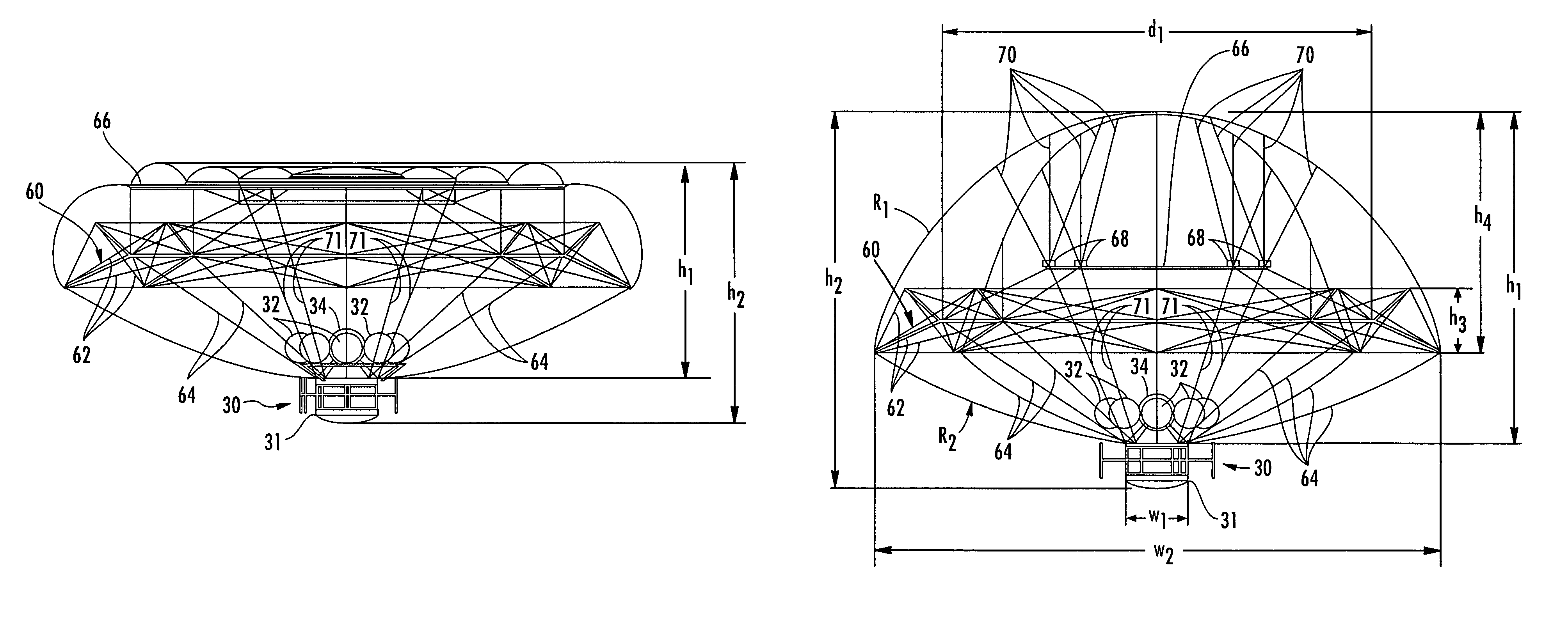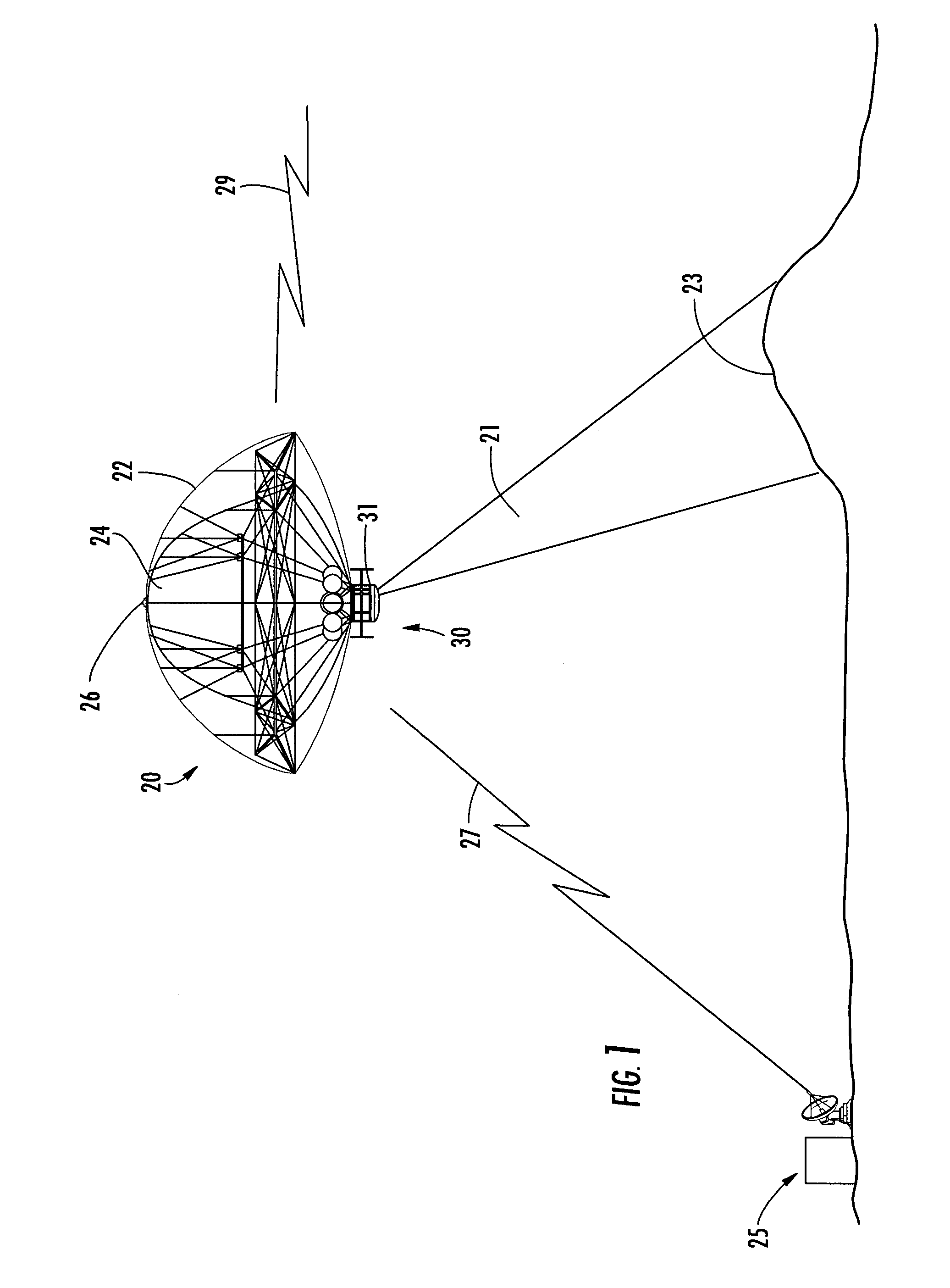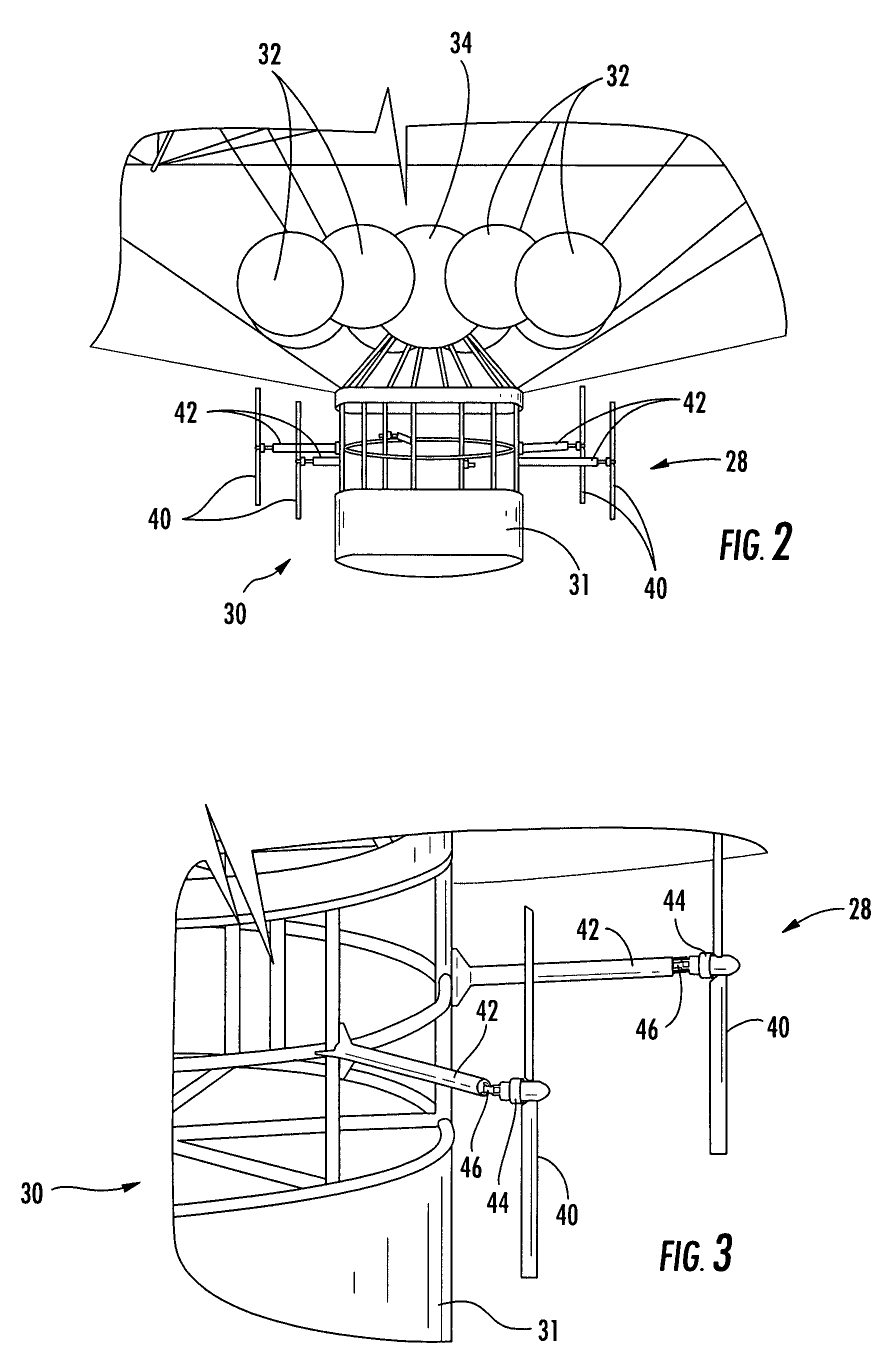Lighter-than-air aircraft and related methods for powering the same
a technology of lighter-than-air aircraft and power supply, which is applied in the direction of aircraft, non-rigid airships, vehicles, etc., can solve the problems of repeated night flight, increased aircraft weight, and increased weight of aircraft, so as to increase the efficiency at which
- Summary
- Abstract
- Description
- Claims
- Application Information
AI Technical Summary
Benefits of technology
Problems solved by technology
Method used
Image
Examples
Embodiment Construction
[0032]The present invention will now be described more fully hereinafter with reference to the accompanying drawings, in which preferred embodiments of the invention are shown. This invention may, however, be embodied in many different forms and should not be construed as limited to the embodiments set forth herein. Rather, these embodiments are provided so that this disclosure will be thorough and complete, and will fully convey the scope of the invention to those skilled in the art. Like numbers refer to like elements throughout, and prime, and double prime notations are used to indicate similar elements in alternative embodiments.
[0033]Referring initially to FIGS. 1-3, the lighter-than-air aircraft 20 is capable of high-altitude station keeping within altitude and perimeter boundaries for extended periods of time. The illustrated lighter-than-air aircraft 20 is in the upper stratosphere at 60,000 to 80,000 feet, for example, where it is ideal to sit, look, listen and provide surv...
PUM
 Login to View More
Login to View More Abstract
Description
Claims
Application Information
 Login to View More
Login to View More - R&D
- Intellectual Property
- Life Sciences
- Materials
- Tech Scout
- Unparalleled Data Quality
- Higher Quality Content
- 60% Fewer Hallucinations
Browse by: Latest US Patents, China's latest patents, Technical Efficacy Thesaurus, Application Domain, Technology Topic, Popular Technical Reports.
© 2025 PatSnap. All rights reserved.Legal|Privacy policy|Modern Slavery Act Transparency Statement|Sitemap|About US| Contact US: help@patsnap.com



